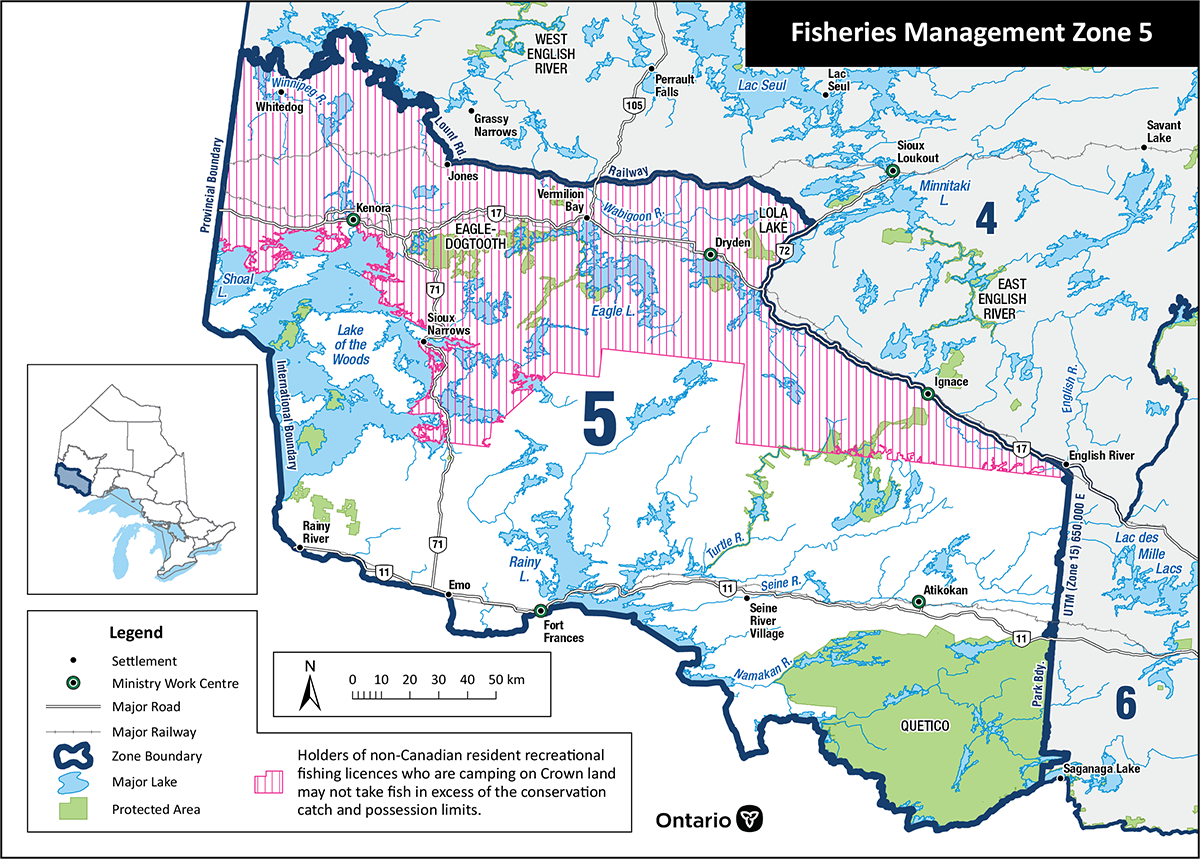Fisheries Management Zone 5 (FMZ 5)
Information about fishing and how fish resources are managed in Fisheries Management Zone 5 (Northwest Region: Fort Frances, Kenora and Dryden).
News and updates
As of January 2024, fishing regulations for walleye and sauger on Lake of the Woods have changed. Read the Ontario Fishing Regulations Summary for details.
Fishing rules
You can:
- find specific rules for fishing in FMZ 5
- use the Fish on-Line mapping tool
- find a complete set of fishing rules in the Ontario Fishing Regulations Summary
About this zone
FMZ 5 is located in northwest Ontario. This zone has:
- an area of 44,360 square kilometres of which over 90% is Crown land
- 5,000 lakes and thousands of kilometres of streams and rivers
- deep, clear lakes
- important recreational, commercial and tourism-based fisheries
- prominent fisheries for walleye, lake trout, northern pike, smallmouth bass, black crappie, lake whitefish and muskellunge
- many large popular waterbodies: Rainy Lake, Rainy River, Lake of the Woods, Shoal Lake, Eagle Lake, Wabigoon Lake, Dinorwic Lake and the Winnipeg River system
FMZ 5 is one of 20 fisheries management zones in the province.
Location
View Fisheries Management Zone 5 map using Fish on-Line or a PDF.
FMZ 5:
- stretches west to the Manitoba border
- borders Quetico Provincial Park on the east
- ends to the south at the Minnesota border
- reaches north to Highway 17 and the Canadian National Railway
- cities include Fort Frances, Kenora, Dryden, Atikokan and Ignace, as well as many smaller communities, including 23 First Nations communities
Legal boundary map and detail maps
- Legal boundary map for FMZ 5 and detail maps 1 - 7 (PDF)
- Northwestern Ontario – United States border waters and detail maps 1 - 7 (PDF)
Monitoring reports and management plans
- Final fisheries management plan for FMZ 5
- Background information for the development of a fisheries management plan in FMZ 5
Zone advisory council
The FMZ 5 council provides advice during the development of fisheries objectives and strategies.
Council members represent a broad range of views including:
- First Nations and Métis organizations
- tourism industry representatives
- municipal governments
- angling groups
- scientists and researchers
- conservation groups
- interested community members
The advisory council participates in fisheries management by:
- sharing ideas and expertise with the ministry
- helping to develop and implement management strategies
- communicating with the local and angling community
For more information about the Fisheries Management Zone 5 advisory council, please contact Steve Bobrowicz.
